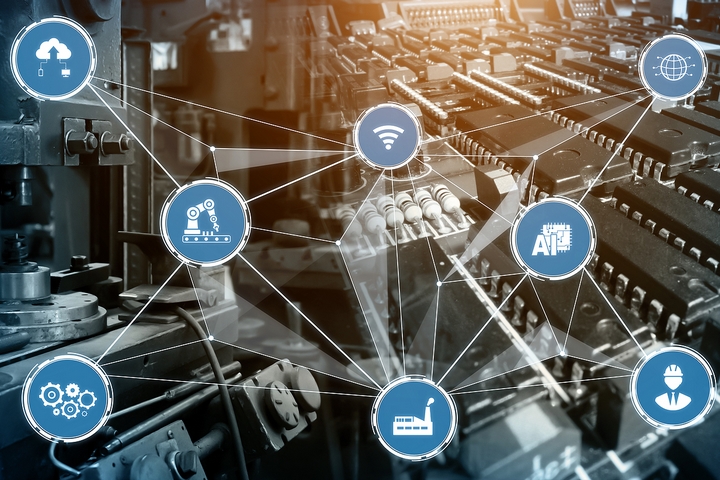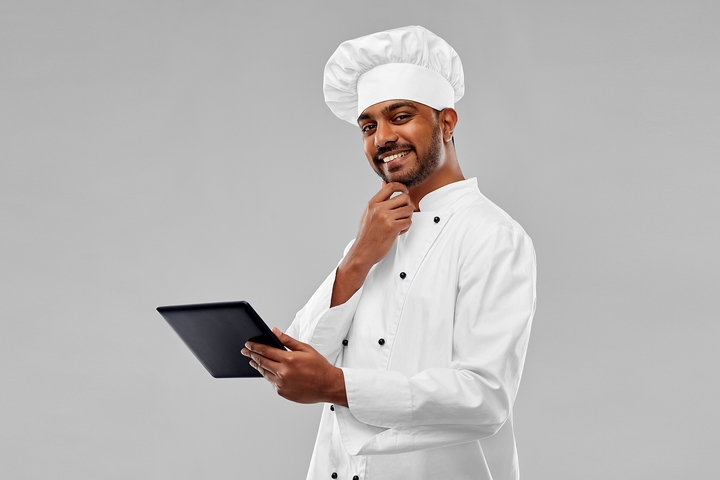AI has enormous potential to produce change in the food industry, with everything from food delivery to assisted cooking on the table. As we see increasing use of artificial intelligence in various industries, in food, industry experts see widespread adoption of recent exciting developments on the horizon.
The use of AI has caused ripples across the food industry, revolutionizing numerous processes and automation tasks. As the international and Canada AI tech sector continues to expand, the food industry will go through even more positive changes. Below are the 13 different impacts of AI in food industry:
1. Impact of AI in Recipes

The impact of AI in food industry is most evident in the area of recipes. It may seem strange that we could one day be served by AI-created recipes but in a sense, scientifically-derived recipes have been on the market for decades. AI-led recipe-making is similar, however, done much faster. AI can analyze ingredients and look for similar flavor compounds. It can advise chefs on flavor combinations or be used on a wider scale in food manufacturing to craft new varieties of classic dishes.
2. Impact of AI in Robotics

An area of the food industry that has not yet taken to AI – simply due to the cost – is in using robotics to cook food. As wages continue to rise for workers, it’s no wonder that robotics in restaurants seems so attractive. Although we may be a decade away or longer from AI making an impact in food robotics, it’s a sector that is worth mentioning as it has the potential to thoroughly change how restaurants are run.
3. Impact of AI in Food Delivery

If Amazon can use autonomous delivery services for its products, there’s nothing stopping companies in the food industry from doing the same. As more rely on food deliveries, there’s potential for autonomous robots to save money for struggling restaurants, as community food distribution is AI-led and delivered to one’s front step.
4. Impact of AI-Assisted Cooking

AI can cook your meal. One day, it very well may be the norm. AI can be used in community kitchens, restaurants, or large-scale food meal manufacturing to cook and prepare meals according to human-directed portions. An AI in this application can reduce the risk of human error, while increasing the amount of food that can be accurately prepared.
5. AI Reduces Carbon Emissions

A bonus of AI working in food delivery, whether it’s delivery to the customer, restaurant, or manufacturer, is that it cuts down on carbon emissions. It equates to less vehicles on the road, reduced traffic congestion, and a cleaner environmental impact on behalf of food industry brands.
6. AI Supply Chain Monitoring

AI and machine learning offer a great opportunity to better monitor ingredients and food travelling through the supply chain. AI can make inventory predictions and re-order, estimate pricing, track goods, and identify opportunities to minimize food waste by controlling these variables in a more efficient way than a lot of human stakeholders can.
7. Impact of AI Cleaning Systems

Imagine a food manufacturer with automated cleaning systems. SOCIP systems, aka self-optimizing-clean-in-place, already exists. Using ultrasonic sensing and imaging, this AI system assesses food remains and microbial debris on food processing equipment, and can clean equipment saving millions of dollars every day.
8. Impact of AI Food Sorting

At a manufacturing level, AI can sort foods by size and shape, or select plants that are best for foods such as choosing adequate potatoes for potato chips and eliminating those which are below-standard. AI could ensure unappealing vegetables are discarded and analyze all sorts of foods according to color, length, width, diameter, and other characteristics.
9. Impact of AI Predictive Analysis

AI can use predictive analysis to understand a customer’s preference in flavors and texture, dividing target audience into specific user demographics and modeling these preferences at production stage. This may one day make it possible to make slight adjustments to menu items, personalizing them to the customer before it reaches human hands.
10. Impact of AI Menu-Making

As a monitoring tool, AI can record large amounts of data and filter them into reports detailing the success and failure of certain menu items, customer behaviours around menu items, purchasing history, and cost. For a corporate-led restaurant or small café, AI can help them optimize their menu and potentially save $1,000s investing in menu items that work rather than those which are simply draining one’s accounts.
11. Impact of AI Food Safety

Although many may disagree with AI video surveillance, it’s already in development. That is, employing cameras to monitor employees and determine if they are following safety protocols. AI, in this context, would detect food safety violations and record them by image to a defined stakeholder.
12. Impact of AI in Ordering Food

AI is already aiding in making ordering food easier than ever before. Voice-enabled devices provide customers the chance to put in takeout and delivery orders without a computer. At restaurants such as McDonald’s, self-serve systems and point-of-sale systems led by AI technologies are allowing more orders to be processed and for orders to be registered more accurately in accordance with customer preferences.
13. Impact of AI in Food Marketing

AI is already used in digital marketing through chatbots and various algorithm-led systems. Impacting the food industry, AI has the potential to be used in apps and on websites to recommend specific menu items according to customer preferences or order food on their behalf. This can be done on a website or single social media account, or use on a wider scale such as restaurant search applications.




